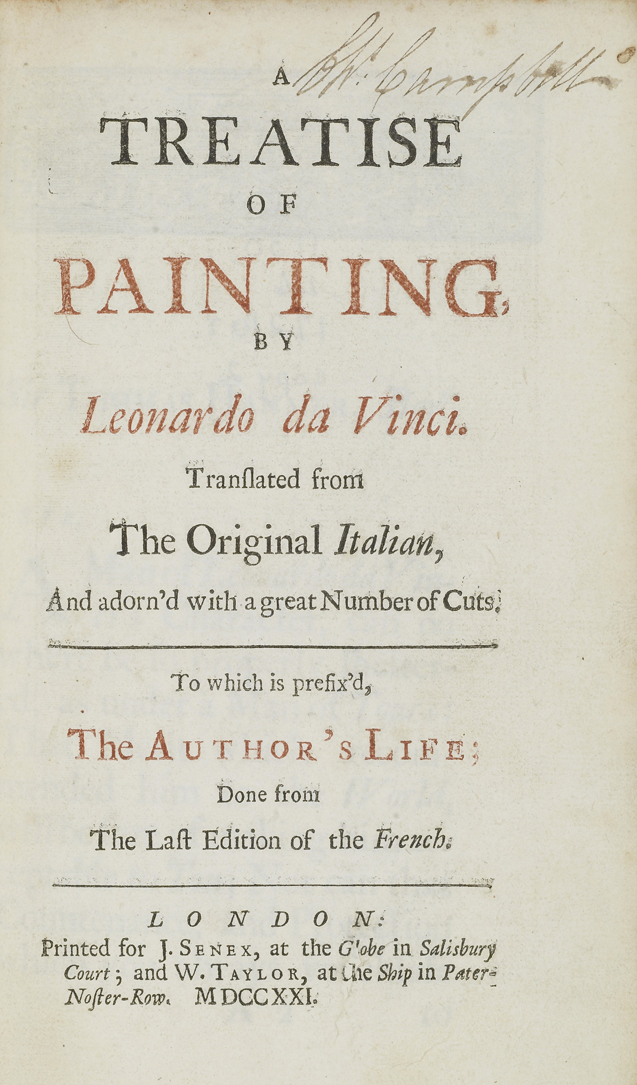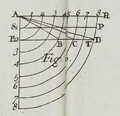
A Treatise on Painting, by Leonardo da Vinci
1721
Senex and Taylor, London
Illustrations:  | Chapter Display  |
I310
The same Colour being placed at different distances, but at equal heights, its Force or Lustre in each position will be proportional to its respective distance from the Eye that views it; as may be thus prov'd: suppose E B C D divided into four parts, each of the same Colour; let the first, E, be removed from the Eye A, two Degrees, the second B, four Degrees, the third C, six Degrees, and the fourth T eight; as is shown in the Arches terminating on the Line A R; [Tab. 1. Fig. 10.] lastly suppose the space A R S P, a Degree of subtile Air, and the space S P E T, a Degree of denser Air; now the Colour E to arrive at the Eye A, must pass thro' a Degree of dense Air E S, and another Degree of more subtile Air S A; and the Colour B, must send its Species or Image to the Eye A, through two Degrees of dense, and two of subtile Air; the Colour C through three Degrees of dense Air, and three of subtile; and the Colour T through four Degrees of dense, and as many of subtile Air: Thus, it appears by this example, that the proportion of the weakening or degradation of Colours, is the same with that of their distances from the Eye that views them; but this is only to be understood of Colours seen at equal heights; the same rule not holding, when they are situate in different parts of the Air, whose different densities alter and weaken them unequally.